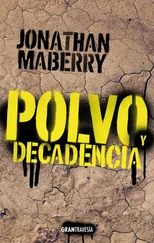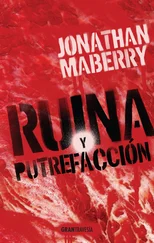Langer opened the cupola. “Herr Colonel?” he called out. “Herr Captain? Anyone?”
No answer.
“Dammit, we’re going to have to get out and check,” he said. “Meyer, Hoppe, Koch — come with me. Schultz, stay here. Keep the tank buttoned up and the motor running.”
The four crewmen climbed out and buckled on flap holsters holding Walther pistols. Hoppe, Koch and Meyer exchanged looks and drew theirs; Langer unfolded the stock of an MP40 submachine gun and snapped in a long magazine. Led by him, they ventured forward.
They approached the 222 armored car, kneeling beside it. Langer rapped on the hull, but there was no response. Peering inside through the open driver’s visor, he flicked on a flashlight.
Slumped in their seats were all three crewmen — motionless, mouths gaping, eyes fixed in the glassy stare of death. He could not see what killed them, but there was no blood. Langer turned to the others and made a slicing motion across his throat. They hissed profanity.
At Langer’s gesture they moved on. Circling the building, they checked the other vehicles and found the same thing. Dead drivers or crews. After scavenging three more MP40s to better arm themselves, the crew crept up to the church.
The heavy wooden door stood ajar, the generator cable snaking in through the crack. They snapped back submachine gun bolts. Motioning for the others to wait, Langer stepped inside, crouching, finger on the trigger. His eyes darted around, probing the pitch blackness for lurking enemies.
Nothing.
He switched on his flashlight and swept its beam around. Then he lowered his weapon and beckoned for the others to enter. Hardened to the horrors of war, their only outward reaction was to raise eyebrows at the sight their flashlights revealed.
The SS soldiers were sprawled dead across the floor.
Hoppe glanced over the nearest corpses. “Don’t see a mark on them.”
“We didn’t hear any explosions,” said Koch.
“No shots either, and no casings on the floor.”
“So what killed them?”
“I don’t know,” said Langer.
They looked around. The interior did not resemble the layout of an Orthodox church. Normally it would be divided into vestibule, nave, and sanctuary, but there was only a single, domed chamber, empty except for the dead, and the stone walls were completely bare. No altar, no chairs, no icons.
“There’s nothing in here,” said Koch, puzzled.
As Langer stepped among the dead men he scrutinized their uniforms. Sewn on their lower left sleeves was a black diamond bearing a white branched rune, a specialist patch he did not recognize. Below it was a black cuff band with the abbreviation RFSS stitched in silver.
“Reichsführer-SS,” he said. “This is the cuff title for Heinrich Himmler’s personal staff.”
Langer stopped beside the corpse of the colonel and searched the man’s pockets, finding civilian and SS identification cards. They stated he was Doctor Ernst Ziegler, a professor of astronomy. What was an astronomer doing in a war zone?
Deepening the mystery was a special pass declaring that Ziegler, ‘by order of the Reichsführer-SS, carries out research of a special and urgent nature about which the details may not be divulged.’ Cooperation was requested of all civilian, police, and military authorities.
Langer checked the captain next and found a Waffen-SS paybook. It contained a summary of the officer’s military record: personal data, training, promotions, awards, and so forth. Flipping through he learned the man’s current assignment was SS-Sonderkommando Ziegler — SS Special Command Ziegler — which meant nothing to him. The SS routinely created a multitude of temporary task forces for a variety of duties and each was usually named after its commanding officer, in this case the unfortunate colonel.
The captain also carried a leather map case. Glancing inside, Langer saw the security classification and special handling caveat marked on a document cover for something code-named Aktion Kosmisch (Operation Cosmic) and read no further.
He returned to the tank and radioed his findings to the lieutenant.
“Must have been poison gas,” said Krugmann. “A booby trap.”
“We didn’t smell anything unusual,” said Langer, “and the bodies don’t show any of the signs. No burns or blisters, no pale skin. No vomit or diarrhea. It’s like they just dropped dead.”
“What else could have killed them? You say there aren’t any wounds.”
“True, Herr Lieutenant, but if it was gas, why weren’t we affected?”
“It could have dissipated before you got there. Maybe the Russians have developed a new non-persistent agent no one’s heard of before, one that leaves no external symptoms. Put your masks on. And put on gloves before touching anything. I’m coming down there.”
Langer dug out the crew’s M38 gas masks, decontamination tablets, gas capes, and gloves. Telling Schultz to don his mask, he slipped on his own before carrying the rest in to the others. As he passed on the lieutenant’s instructions, Meyer beckoned to him.
He pointed at the floor. It was paved with heavy flagstones and he shone his flashlight down on a large one set in the center. It had an old, faded Cyrillic inscription with what appeared to be a year: 1801.
“Fresh pry marks along the edges,” said Langer, kneeling to examine it more closely. He glanced over at the equipment the SS soldiers had brought in. Much of it was excavating tools: pry bars, hammers, mattocks, shovels, and a block-and-tackle hoist on a tripod had been erected. “They were trying to raise this.”
Hoppe raised an eyebrow. “Grave robbing?”
“Maybe. Can anyone read Russian?” The others shook their heads.
A floodlight had been set up, but when Langer tried to switch it on it did not work. The bulb looked fine, so he went out and checked the generator. Despite having plenty of fuel it would not start. Upon closer inspection the wiring appeared to have melted somehow. The building itself had no electric lighting, only empty wall sconces for candles.
“Get these bodies out of here,” said Langer, arms akimbo. “Tell Schultz to come help.”
Meyer fetched Schultz and the four crewmen began snapping off identification disks and collecting paybooks from the corpses before carrying them outside.
Krugmann strode in with four other tank crewmen, all wearing gas masks and gloves. The others snapped to attention, but he motioned for them to stand at ease. His crew joined Langer’s men in their gruesome task.
Langer handed Krugmann the map case, the identity cards of the two SS officers, and Ziegler’s special pass. The lieutenant switched on his flashlight and inspected them.
“Did you read any of this?” he asked Langer at length, giving him a sharp look.
“Only the identity papers, Herr Lieutenant.”
“Well, this was a unit of SS Special Command Ziegler, a detachment that doesn’t fall under any of the main departments of the SS. It’s part of Himmler’s personal staff.”
“What was it organized for?”
“Seems SKZ was created just before the war for the purpose of ‘retrieving artifacts of special scientific importance from frontline areas.’ They had orders to capture this shrine.”
“What for, Herr Lieutenant?”
“I’m still trying to piece that together. These other documents reference an SS file classified Secret State Material, which for obvious reasons would never be taken out into the field. So this is a redacted summary. One thing’s clear though: the Russians thought the shrine was important too. According to this intelligence report, it’s the only religious building in the area the Communists didn’t demolish. NKVD security troops defended this sector until yesterday when they were pulled back to help defend Kiev. That gave SKZ the chance they needed. Our division was closest so Himmler requested we assist.”
Читать дальше
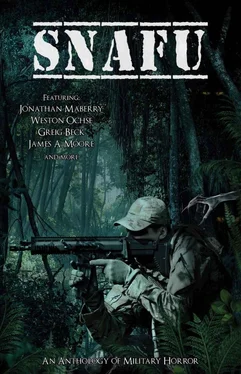
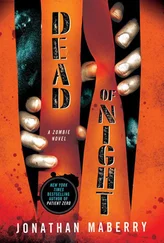
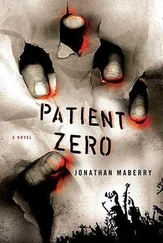


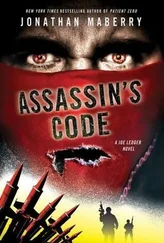




![Джозеф Нассис - SNAFU - Heroes [An Anthology of Military Horror]](/books/412548/dzhozef-nassis-snafu-heroes-an-anthology-of-milit-thumb.webp)
